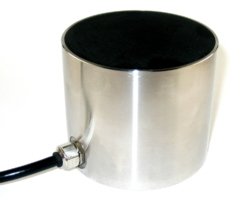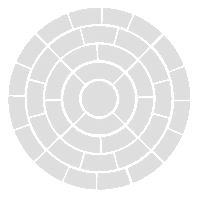



Inspection of thick parts, forged parts, complex interface parts and difficult materials (coarse grain, non homogeneous).
The shaping of the active surface in a 2D array allows a 3D beam steering and 3D correction of the focus, which can compensate, for example, for the defocusing effect of a complex interface or an anisotropic material.
Furthermore, matrix immersion transducers, like annular arrays, allow electronic focusing at different depths.
| Frequency (MHz) |
Nb elts | Active diameter (mm) |
Housing size diam. x height* (mm) |
| 10 | 128 | 40 | 50 x 60 |
| 7.5 | 128 | 50 | 60 x 60 |
| 5 | 128 | 60 | 70 x 60 |
| 2.25 | 128 | 80 | 90 x 60 |
*indicative values
Matrix arrays can be used with time reversal mirror technique (M Fink).
This patented technique using two successive shots allows significant signal to noise ratio improvements by compensating the material anisotropy.